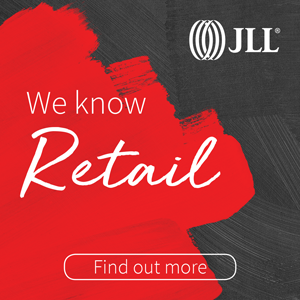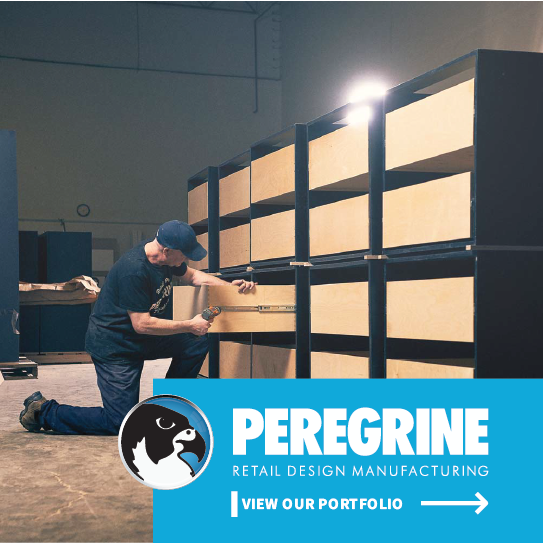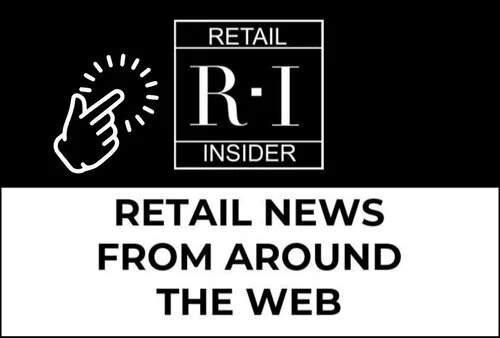Why Digitally-Native Brands Open Customer-Focused Brick-and-Mortar Storefronts
/amazon go store. photo: wikipedia
By Raymond Riley
Famously seven years ago, the founder of a successful e-commerce apparel company swore off physical retail: “We will shut the company down before we go to physical retail.” At the time of that statement the company was a year old. Today they have five stores, somewhat ironically visible at the footer of their website.
That particular company is in no way relevant to this tale- hence why no names are used. This is a tale instead of the related breed of new retail blood that has found their way onto West Queen West in Toronto, Yorkdale Shopping Centre and the like.
This is about where the industry sits halfway out of an overblown microcosmic apocalypse, and in the midst of a macrocosmic retail operations existential crisis.
Let’s rewind again to 2012, when the average cost for one-thousand ad impressions (CPM) on Facebook was 62 cents. Instagram was acquired by Facebook in the second quarter of 2012, and today each platform garners $5+ on average for each 1000 impressions. A 725%+ increase in just one component of a retailer’s overall customer acquisition cost. And a significant factor behind “e-commerce only" being simply economically untenable.
warby parker storefront, yorkdale shopping centre. photo: retail insider
As the founder and CEO of the aforementioned apparel company said regarding pure play retail’s lack of profitability, “It’s the (industry’s) dirty secret.”
To summarize: It was easier and way cheaper with a good product (the minimum undifferentiated standard of retailing today) to get said product in front of tons of hundreds of thousands targeted users that would likely be interested in acquisition.
Fast-forwarding to today: these brands have fantastic product they were able to leverage online, build serious followings and loyalty, aggregate meaningful insights through data, and have now made the cautious transition to physical retail. And to give credit where credit is due, we’ve seen some very thoughtful approaches to store design, the integration of technology with the analog store, and meaningful brand partnerships.
However, as the title of Marshall Goldsmith’s book says, “What got you here- won’t get you there.”
Without banging on with some dreadful retail drivel, but to set up the rest of this piece: e-commerce as a retail medium has fundamentally changed the way customers gain awareness, discover, and research brands and their products. No shit.
frank and oak storefront. photo: retail insider
And as we all know, it has completely overhauled the role of marketing within a retail business. The concepts of brand, heritage, authenticity, and sustainability have been ushered to the forefront, and today can be conveniently easily distributed by marketers through social and online channels via rich engaging video.
An increasing and ominous trend however, is that these marketers and “brand” folks end up steering the ship- particularly as these brands pivot into physical retail. Here can lie the problem…
Marketers sell products. Sure there’s customer research, the development of moving campaigns, and a whole lot more, but all in service of driving traffic in whatever form to sell products.
Here lies the deeper problem…
In 2020, physical (staffed) retail is not about selling products; it never truly was. Amazon sells products, but sells something much more compelling: convenience- whether online or via an AmazonGo store. This generally correlates with the average SKU value and dwell time. My last four AmazonGo receipts in Chicago have yielded a $3.25 average purchase and a 42 second visit. Who needs a sales pro? Hello: Shoppers Drug Mart and Rexall…
casper showroom. photo: casper
On the topic of let’s say, in-store standards and behaviour: there have always been bad actors. From the proverbial used car salesman to today’s underdeveloped retail remnants: “Hi there- what can I help you find today?”. While no other channels existed pre-Internet Age to compete, we must consider how much things haven’t really changed with today’s new breed of digitally native retailers:
“Hi, how are you? Have you ever been here before? Well we were founded by [insert startup circumstances] from [insert geographically blessed region] that set out to disrupt [insert category catchphrase]…”
Which then transitions seamlessly (I kid!) to: “Our [core product] is made of [insert in vogue manufacturing technique or fabric] so it [generalization regarding fit or style].”
This is new? Does the shopper seriously care about your manifesto? Is this “customer-centric” in the slightest?! Would you walk up to a dating prospect in a bar and provide your personal pitch?
Is there any interest in the customer? Did they travel far? Have they found any nearby shops they’ve liked? These tactics aren’t new, but boy have they been forgotten.
For these digitally native brands trying to zig from the used car retail sales zags of the 1990s- this is the exact same pig with different lipstick.
Same drug, different coloured vial. Cooked in an underground marketing lab and laced with a lack of a shop floor experience. Highly addictive and killing in-store conversion rates.
This “approach” makes sense if we’re talking about a YouTube ad, or a brand manifesto on a retailer’s landing page. Today many retailers are treating digital landing pages the same as the analog shop floor. Customers are indeed customers, but behaviour is not universal.
This is the critical lesson for next-generation retail store operations teams to embrace- particularly for those ascending the ranks with leadership teams that have spent more time A/B testing site pages, and far less time on the shop floor.
At under ten stores, a retailer can get by with almost any (or none) approach to in-store sales and service standards, but doesn’t stand a chance in scaling effectively without a front-line retail culture that is genuinely interested in and curious about customers-first, and brand-second. The customer drove a distance, maybe took public transit, but ultimately stumbled the threshold into your store.
Not the same as stumbling on your website or your Instagram page.
Because “What got you here- won’t get you there.”
Ray Riley is the Co-Chief Executive Officer of Progress Retail, a store operations platform for retailers and brands: the one stop shop for retail learning, store execution and communications, and next-gen retail sales management.

















![L.L.Bean Continues Canadian Expansion with 1st Toronto Store [Photos]](https://images.squarespace-cdn.com/content/v1/529fc0c0e4b088b079c3fb6d/1603908990197-KDT3UNTEHFBFJF5FJ36N/L.L.Bean_Don_Mills_8.jpg)



![Retail-insider-NRIG-banner-300-x-300-V01-3[2].jpg](https://images.squarespace-cdn.com/content/v1/529fc0c0e4b088b079c3fb6d/1593476525034-QRWBY8JUPUYFUKJD2X9Z/Retail-insider-NRIG-banner-300-x-300-V01-3%5B2%5D.jpg)
![Retail-insider-NRIG-banner-300-x-300-V01-2[2].jpg](https://images.squarespace-cdn.com/content/v1/529fc0c0e4b088b079c3fb6d/1593476491497-W6OZKVGCJATXESC9EZ0O/Retail-insider-NRIG-banner-300-x-300-V01-2%5B2%5D.jpg)
![Retail-insider-NRIG-banner-300-x-300-V01-4[2].jpg](https://images.squarespace-cdn.com/content/v1/529fc0c0e4b088b079c3fb6d/1593476508900-TJG5SNQ294YNOCK6X8OW/Retail-insider-NRIG-banner-300-x-300-V01-4%5B2%5D.jpg)